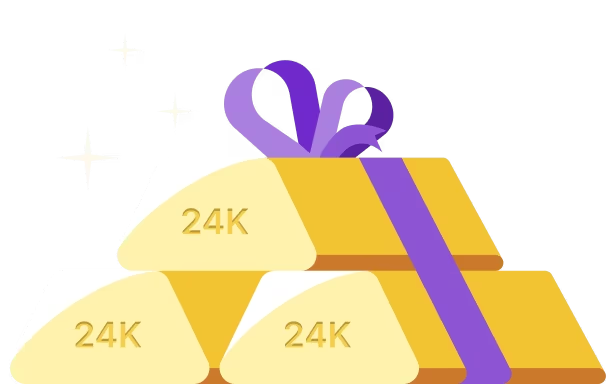In a world driven by innovation and connectivity, traditional lending models have been met with a disruptive force that has sparked a new era of financial empowerment.
Imagine a world where borrowers and lenders connect directly, cutting out the middleman and forging a path towards mutual financial growth.
That’s exactly what Peer-to-Peer (P2P) lending is, where individuals come together for financial support, instead of traditional institutions.
This is a paradigm shift that has captivated the attention of borrowers seeking funds and investors aiming to diversify their portfolios.
Sounds like a win-win right? Well, it could be but there definitely are peer-to-peer lending advantages and disadvantages.
In this blog, we'll dive deep into the essence of P2P lending, exploring its workings, the benefits it offers to borrowers and investors, and a careful examination of the potential risks involved.
By the end, you'll gain a comprehensive understanding of this transformative financial avenue, equipping you with valuable insights to make informed decisions in your borrowing or investment journey.
What is P2P Lending?
Peer-to-Peer (P2P) lending, also known as person-to-person lending or social lending, is a modern and innovative form of borrowing and investing money that takes place through online platforms and apps.
It brings together individuals looking to borrow money (borrowers) and individuals willing to lend money (investors) without any intermediaries in a direct manner.
In a traditional lending model, an individual who wants to borrow money will go to a bank or other financial institutions for a loan and the approval of the loan is dependent on income, necessary paper work, credit score and so on.
For many individuals, getting a loan from a bank is difficult due to several factors and may have to resort to other methods like borrowing from friends and family or securing high interest personal loans from money lenders.
The P2P lending model disrupts this traditional lending system by allowing borrowers to directly contact the investor through online platforms to borrow the loan. Here, P2P lending platforms act as facilitators, providing the online infrastructure that connects borrowers and investors.
These platforms assess the creditworthiness of borrowers, assign interest rates based on risk assessments, and facilitate the disbursement and repayment of p2p loans.
This technology-driven approach eliminates many of the overhead costs associated with traditional banking, making P2P lending an attractive alternative for both borrowers and investors.
Benefits of P2P Lending
There are several advantages to the P2P lending model, for the borrower as well as the lender. Let’s break down the benefits for both of them!
The Borrowers Perspective
- P2P lenders can offer competitive interest rates compared to traditional lenders, especially for borrowers with good credit scores.
- Depending on the lender, borrowers may receive flexible loan terms, including repayment schedules and loan durations that suit their financial needs.
- Compared to traditional financial institutions, P2P lending platforms typically provide quicker loan approval and disbursement
- P2P lending expands the horizons of borrowing for individuals and businesses that have limited credit history by providing better opportunities to receive funds.
The Lender Perspective
- P2P lending allows investors to diversify their investment portfolio by spreading their funds across multiple loans to different individuals.
- Investors have the potential to earn competitive returns on their investments through the interest and principal repayments received from borrowers.
- P2P lending platforms provide transparency by sharing relevant information about borrowers and their credit profiles, allowing investors complete control to make informed investment decisions.
- It enables investors to directly support individuals and small businesses, bypassing traditional intermediaries and making the entire process smoother.
How does P2P Lending Work?
Wondering what is the P2P lending process? Here's a step-by-step breakdown of how P2P lending works:
Step 1: P2P Platform Registration
Whether you are a lender or an investor, the first step is to register with a platform that is one of the RBI approved p2p lending companies.
If you are wondering which P2P platform is RBI approved, it is important to note that any company which wants to offer P2P lending services need to register for an NBFC-P2P license from the RBI.
Step 2: Creation of Loan Request
Once you create an account, as a borrower you need to submit a loan application on the platform, specifying the loan amount and purpose.
The platform will then assess your creditworthiness using various factors, including credit history, income, employment, and debt-to-income ratio.
Step 3: Investor Selection and Funding
If the borrowers loan application is approved, the loan will then be listed on the platform’s marketplace.
Investors can browse through these loan listings and select the ones they find suitable for investment based on factors like borrower creditworthiness, interest rates and loan purpose. Investors have the option to fund a portion or the entire loan amount requested by a borrower.
Since multiple investors can contribute to a single loan, it diversifies the overall risk.
Step 4: Loan Approval and Disbursement:
Once the loan is fully funded by investors, the platform conducts a final review and approval process.
When this is complete, the loan amount will be disbursed to the borrowers bank account.
Step 5: Repayment and Distribution
Once the loan term begins, The borrower can make regular monthly repayments and the funds are distributed proportionally to the investors.
The platform also monitors the borrower's repayment progress, sending reminders for timely payments and managing any necessary collection processes.
It is important to note that P2P lending platforms charge fees to borrowers and investors for their services.
Understanding Risks of P2P Lending
While Peer-to-Peer (P2P) lending in India seems like a perfect solution for borrowers and lenders alike, it's essential to understand the potential risks involved.
One of the primary risks is the default or late repayment by borrowers, which can lead to financial losses for lenders. Despite the credit assessments conducted by P2P lending platforms, there is still an inherent risk associated with lending to individuals or small businesses.
It's important to note that P2P lending is not covered by deposit insurance schemes in India, so investors may not have the same level of protection as traditional bank deposits.
As an investor, it's crucial to thoroughly evaluate borrower profiles, diversify investments across multiple p2p loans, and complete due diligence to minimize risks.
Takeaways
Peer-to-Peer (P2P) lending has emerged as a dynamic and innovative financing option that has reshaped the traditional lending landscape.
It allows borrowers access to funds with competitive interest rates, while providing investors the opportunity to earn attractive returns.
However, it's important to approach P2P lending with caution and be aware of the associated risks.
By understanding the risks, conducting proper research, and making informed decisions, both borrowers and investors can leverage the benefits of P2P lending and contribute to the growth of India's lending ecosystem.










